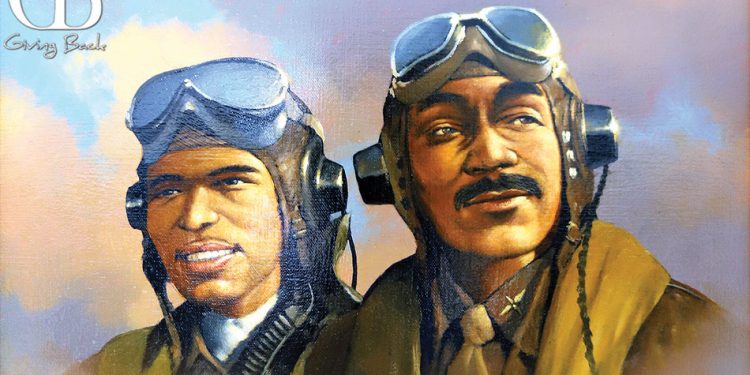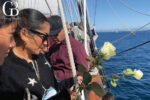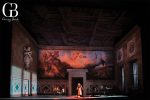Honoring the Tuskegee Airmen

Honoring the Tuskegee Airmen
San Diego Air & Space Museum International Hall of Fame
Of all the distinctive space vehicles and aircraft at the San Diego Air & Space Museum – and there are many, from the A12 Blackbird and Sea Dart near the building’s entrance, the actual Apollo 9 Command Module, an iconic Bell X-1, a replica of Charles Lindbergh’s Spirit of St. Louis, the Gee Bee Racer, and Amelia Earhart’s beloved Lockheed Vega – one that stands out in many visitors’ minds is the North American P51D Mustang in the World War II Gallery.
The Mustang does not capture attention just because of its elegant design, laminar flow wings and stabilizing tail shrake. Instead, the plane’s distinctive markings are what sets it apart, because of its red tail and unmistakable markings from one of World War II’s most storied aerial units, the famed Tuskegee Airmen.
Known as the “Red Tails” because of their unit markings, the Tuskegee Airmen overcame much adversity to become one of the most respected units of the Army Air Corps. In June 1941, the Tuskegee Airmen program officially began at the Tuskegee Institute, a highly regarded university founded by Booker T. Washington in Tuskegee, Alabama. The Airmen, including ground support crews, were placed under the command of Capt. Benjamin O. Davis, Jr., one of the few African American West Point graduates.
The Tuskegee Airmen saw their first combat mission in North Africa in 1943. They were initially equipped with P-40 Warhawks and P-39 Airacobras. Later they had the P-47 Thunderbolts, and finally were given the airplane they would become most identified with, the P-51 Mustang. By the end of the World War II, the Tuskegee Airmen achieved an impressive combat record, shooting down well over 100 German aircraft and receiving three distinguished unit citations.
The Tuskegee Airmen were also awarded several Silver Stars, 150 Distinguished Flying Crosses, 8 Purple Hearts, 14 Bronze Stars and 744 Air Medals. Their valiant efforts lead the way to the desegregation of the armed forces in 1948.
The Tuskegee Airmen entered the International Air & Space Hall of Fame at the San Diego Air & Space Museum in 2008. Notable amongst the pilots who represented the Tuskegee Airmen when they were inducted was Captain Roscoe Brown. The Museum’s P-51 is presented in the personal markings of Captain Brown’s Mustang, who was a squadron commander of the 100th Fighter Squadron of the 332nd Fighter Group. During his service, he shot down an advanced German Me 262 jet fighter and a FW-190 Focke Wulf fighter, and he is widely credited as the first pilot to shoot down a jet. He was later awarded the Distinguished Flying Cross.
The International Air & Space Hall of Fame is the most prestigious induction of its kind in the world and is composed of hundreds of air and space pioneers, engineers, inventors and innovators, along with adventurers, scientists and industry leaders. NASA Mercury, Gemini and Apollo astronauts and Russian cosmonauts are honored in the Hall, as well as famous legends such as the Wright Brothers, Charles Lindbergh, Neil Armstrong and Amelia Earhart. Notable inductees also include Buzz Aldrin, Chuck Yeager, Igor Sikorsky, Jack Northrop, Jackie Cochran, William Boeing, Sr., Reuben H. Fleet, Glenn Curtiss, Wally Schirra, Bill Anders, Jim Lovell, T. Claude Ryan, Jimmy Doolittle, Bob Hoover, Ellen Ochoa, Peggy Whitson, Patty Wagstaff, and many more. Learn more at www.sandiegoairandspace.org.





